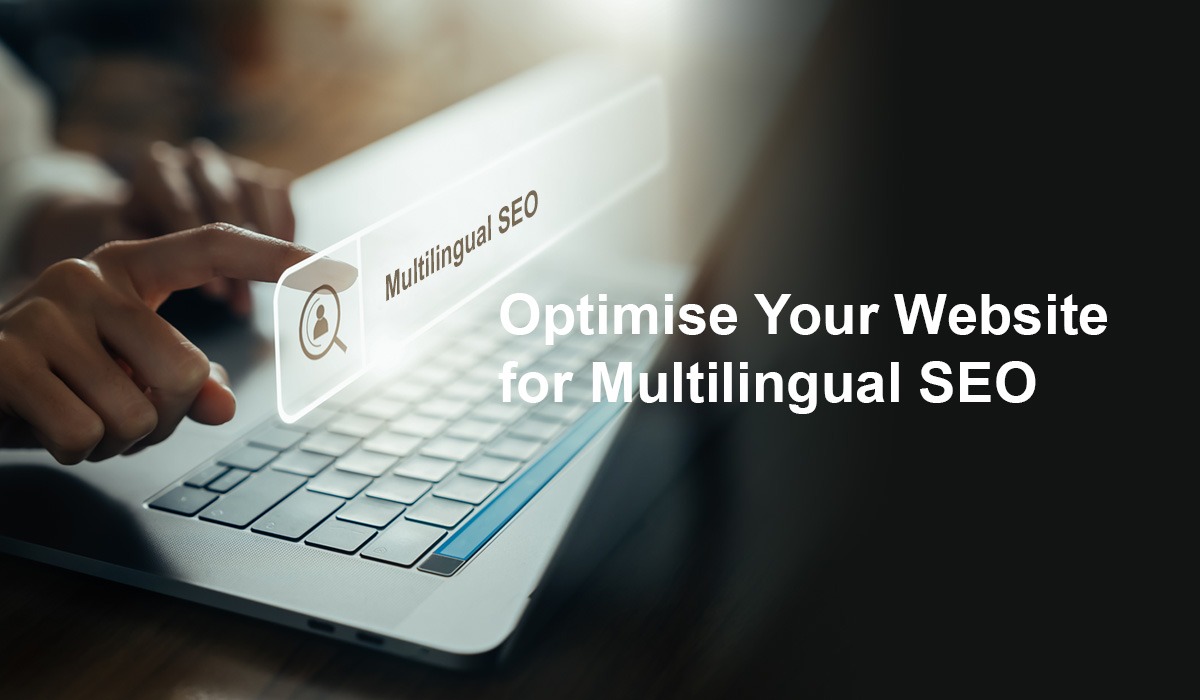How to Optimise Your Website for Multilingual SEO?
In a digitally connected world multilingual SEO (search engine optimisation) has become a crucial aspect of any website’s marketing strategy. Connecting with your audience on a deeper level leads to better revenue and enhanced customer loyalty. And what’s better than connecting with your audience in a language of their choice?
This is especially true for businesses looking to expand their presence in local markets of a country like India. India is home to approximately 1.44 billion people, who speak thousands of languages. As of now, the country recognises 22 official languages. This means businesses that want to cater to the local population must recognise the importance of localisation and multilingual SEO.
However, building and maintaining a multilingual online presence is not a piece of cake. It requires a lot of research, planning, and execution. Focusing on setting up a multilingual website is important to grow in a linguistically diverse country like India.
A well-optimised multilingual website can help your brand reach a wider audience. It enables you to explore the business opportunities and landscapes that were earlier untapped. That’s why we have listed down some of the best strategies to help you optimise your website for multilingual SEO. In this article, we’ll understand multilingual SEO and how you can optimise your website for it.
What is Multilingual SEO?
Multilingual SEO is the practice of optimising your website for multiple languages.It helps enhance the visibility of a website in search results in regional markets and reach a wider audience. It allows users to find your website in their local language through organic search results.
The primary goal is to offer a better experience to your potential customers in their native language. This improves engagement and conversion rates. By addressing language preferences, you can build stronger connections with your customers. This involves more than just translating the content on your website. It focuses on adapting it to cultural nuances and local search behaviours.
Now, let’s take a look at some of the tips to optimise your website for multilingual SEO.
Tips to Optimise Your Website for Multilingual SEO
Tip 1: Selecting Languages for Your Website
When choosing languages for your website, you must focus on identifying your target audience’s preferences. For instance, if your target audience is in Karnataka, you should consider Kannada as your website language for that region. Similarly, for Gujarat, your focus should be on Gujarati.
Start by analysing your website’s traffic data to understand which languages your visitors speak. And don’t forget to consider regional dialects and variations. This will ensure your content resonates with the local audience. You can get more valuable insights by researching your market demographics and conducting surveys. With this approach, you can target your multilingual SEO strategy with better accuracy.
Tip 2: Conducting Keyword Research for Multilingual SEO
It goes without saying that keyword research is the cornerstone of any successful SEO strategy. And it holds equal importance for multilingual SEO. Comprehensive keyword research in multiple languages helps you understand the search behaviour and preferences of your target audience.
It is crucial to adapt keywords to account for cultural nuances and local search trends. You can leverage local search engines and keyword tools to identify relevant keywords that align with your audience’s interests. This will also help you identify the keywords that have less competition or more search volume associated with regional languages.
Tip 3: URL Structure and Hreflang Tags
A clear and consistent URL structure is essential for effective multilingual SEO. You should consider using separate URLs for each language version of your website. This helps search engines understand and index your content appropriately.
For example, you can use subdirectories (example.com/en/) or subdomains (en.example.com) to organise your multilingual content. Implementing hreflang tags is crucial to signal language and regional targeting to search engines. These tags indicate the language and geographical targeting of a webpage. It ensures that users are directed to the correct version of your website depending on their preferred language.
With correct implementation, you also avoid duplicate content issues. This improves user experience by directing them to the appropriate language version.
Tip 4: Content Localization and Cultural Relevance
You might think that content translation equals localisation. However, that is not the case. Localisation is more than just translating content. It is about adapting content that suits the cultural context and preferences of your target audience. This includes using culturally relevant images, examples, and idiomatic expressions, and adjusting to local customs and traditions.
With effective localisation, you can enhance user experience and encourage engagement. Localisation makes your content more relatable and meaningful to the audience. For instance, incorporating local festivals or events can make your content resonate more deeply. Platforms like Reverie’s Anuvadak excel at localisation. This localisation platform facilitates the translation and localisation of multilingual content with ease.
When your content is culturally relevant, it fosters a stronger connection between your business and your audience. It increases the likelihood of successful engagement and conversion. An article from Harvard Business Review quotes Boyd Rogers, VF Corporation’s former supply chain president, “ It is not unusual for localization to improve sales by 40% to 50%.”
Tip 5: Optimising Metadata and On-Page Elements
Translating and localising meta titles, descriptions, and headers are crucial for your website. So, you must ensure that these elements are accurately translated and culturally adapted. This helps in maintaining their relevance and impact.
In addition, following best practices for on-page optimisation can improve your website’s visibility in search engine results. These practices may include:
- Using relevant keywords
- Maintaining consistency across different language versions
Tip 6: Local Backlink Building
Acquiring backlinks from local and relevant websites is an effective strategy. It boosts your multilingual SEO efforts. Start by focusing on building relationships with local directories, online communities, and industry-specific websites. These backlinks signal to search engines that your content is valuable and relevant to the local audience. It helps in improving your website’s authority and ranking.
In addition, participating in local forums and collaborating with local influencers can also enhance your backlink profile. With this localised approach you can boost your SEO and increase your website’s credibility and visibility.
Tip 7: Mobile Optimization for Multilingual Websites
In our digital world, not optimising your website for mobile devices is no less than a crime. To ensure that your multilingual website is reaching your target audience, you must optimise it for mobile devices.
Implement responsive design techniques to offer a seamless user experience across different languages and devices. This involves ensuring that text, images, and navigation elements adjust appropriately to various screen sizes. The top mobile SEO practices involve:
- Optimising page load speed
- Using mobile-friendly fonts
- Making the content accessible and readable on smaller screens
Multilingual SEO: The Final Say!
Optimising your website for multilingual SEO is essential to reach local audiences and enhance user experience. Implementing the strategies we discussed can help you improve your website’s visibility in search engines. It also enhances user engagement and conversion rates. A well-optimised multilingual website helps you connect with your target audience and boosts business growth.
Localisation is one of the biggest aspects of multilingual SEO optimisation. However, it can be tricky to understand and implement. This is where Reverie’s Anuvadak can help you in simplifying the process of localisation. With it, you can streamline your localisation efforts and ensure that your content is accurately and effectively translated, especially in Indian languages. To learn more about it, you can contact us today and book a demo!



